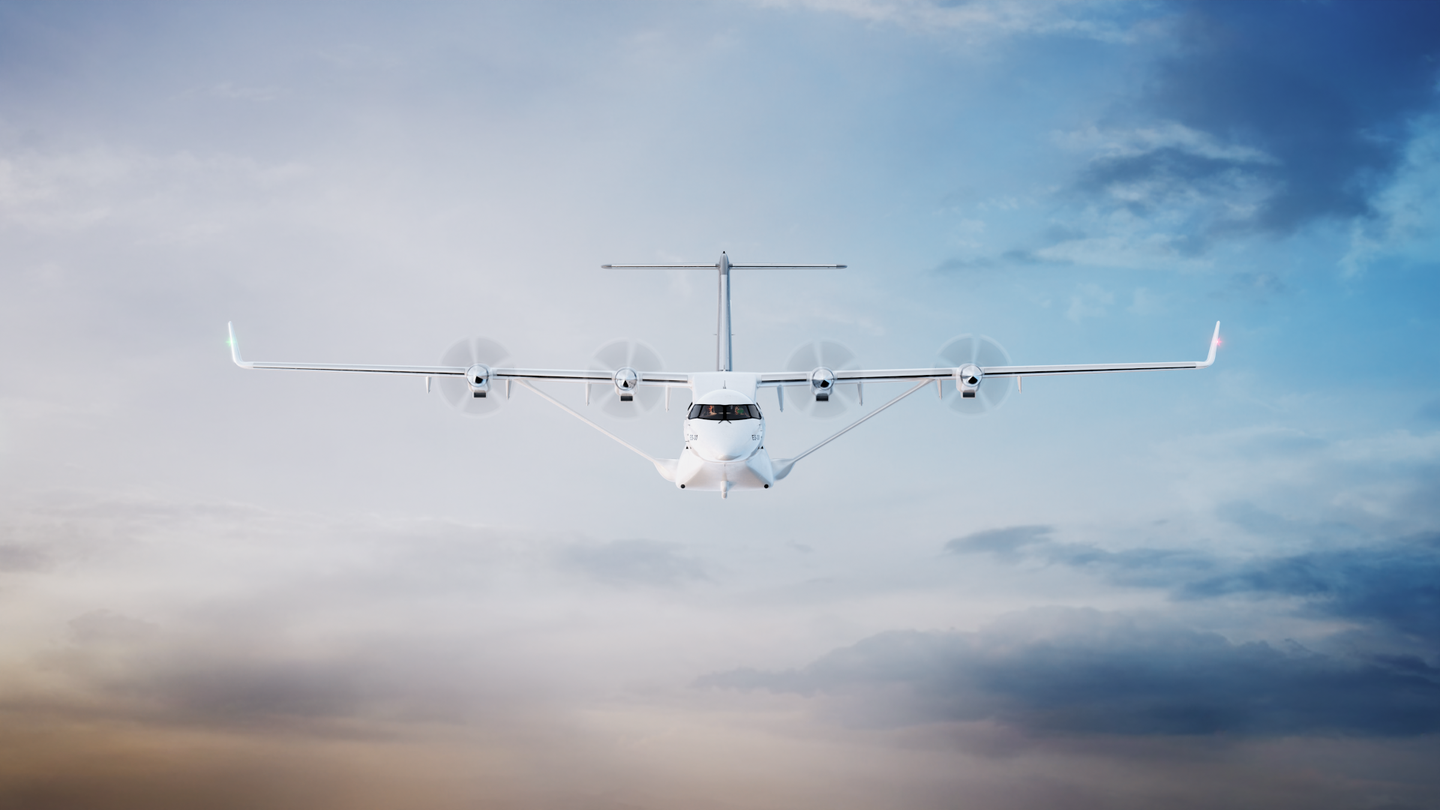Hybrid-Electric Airplane Manufacturer Heart Aerospace Raises $107M
The series B round brought the company’s total funding raised to date to $145 million, supporting development of the ES-30 regional airplane.

Heart Aerospace’s hybrid-electric ES-30 regional airplane promises lower emissions, noise, and operating costs compared to conventionally fueled aircraft. [Courtesy: Heart Aerospace]
A manufacturer planning to build hundreds of hybrid-electric aircraft for United Airlines’ fleet just secured some major funding.
Heart Aerospace, maker of the 30-seat, hybrid-electric ES-30 regional airplane, this week raised $107 million in a series B round, bringing the company’s total funding raised to date to $145 million. The money will go toward type certification for the ES-30 under the European Aviation Safety Agency’s (EASA) CS-25 large aeroplanes category, expected in 2028.
Compared to conventionally fueled airplanes on short-haul routes, the design will lower emissions, noise pollution, and, most importantly, operating costs, Heart Aerospace claims.
“Billions of people around the world are looking to be connected to this amazing infrastructure over the next decade,” said Anders Forslund, co-founder and CEO of Heart Aerospace. “Meanwhile, the industry has committed to net-zero emissions by 2050. The only way forward is to decouple the tremendous growth in aviation from its emissions, and we believe ES-30 is the first stepping stone.”
In its fully electric, zero-emissions configuration, in which the batteries power four electric motors, the ES-30 has a range of about 124 sm (108 nm). But the aircraft can also be flown in reserve-hybrid configuration, using a pair of turbogenerators running on sustainable aviation fuel (SAF). This doubles the model’s range to 248 sm (215 nm). But it actually maxes out at about 497 sm (432 nm) with a slightly reduced load of 25 passengers.
Reserve-hybrid mode can also be used during cruise on longer flights, complementing the electrical power supplied by the batteries. As Heart’s battery technology matures, the ES-30’s range in all-electric mode is expected to increase, while battery maintenance and electricity costs go down.
At launch, the ES-30 will not produce emissions around airports or on routes up to 124 sm (108 nm). As battery technology improves, though, so too will zero-emissions range. Eventually, the company claims, it will cut emissions per seat in half compared to 50-seat turboprops on longer sectors, or by 90 percent if SAF is used.
In fact, Heart promises fuel costs, maintenance costs, and operating costs per seat comparable to a 50-seat turboprop, but with significant per-trip improvements. At the same time, the aircraft’s electric motors keep noise to a minimum during takeoff and landing.
“Moreover, because of the superior economics of electric aircraft over their fossil-fuel counterparts, the ES-30 will bring back service to communities that have lost connectivity and open many new markets,” said Forslund.
The ES-30 is the only clean-sheet, hybrid-electric airplane of its size possessing active type certification applications with the European Union Aviation Safety Agency (EASA). Heart expects to unveil a full-scale demonstrator this year. But first it will use this week’s cash injection to develop the aircraft’s hybrid-electric powertrain.
Sagitta Ventures, a Danish investor focused on early stage firms, is among the new investors in the series B, which included Bill Gates’ Breakthrough Energy Ventures, EQT Ventures, and Y Combinator. Customers and previous investors United Airlines Ventures and Air Canada also participated in the round, with the latter providing $5 million.
Further, Ted Persson, partner at EQT Ventures, will join Heart’s board of investors.
“As someone said, the Stone Age didn't end because we ran out of stones, and the fossil fuel age won't end because we [ran] out of fossil fuels,” said Persson. “Heart Aerospace is taking decarbonization to the skies, and we’re proud to be funding technology that will fundamentally change the aviation industry.”
Heart has approximately 250 firm orders for the ES-30 to go along with options and purchase rights for 120 aircraft, as well as letters of intent for 191 more. Thirty of those belong to Air Canada. The bulk, though, come from United and Mesa Airlines, a subsidiary which will help the airline introduce electric aircraft. A conditional agreement in 2021 calls for each to acquire 100 aircraft.
“United’s goal of net-zero emissions requires bold solutions, and that’s why we’ve invested in a broad portfolio of low-carbon technologies including hybrid-electric aircraft,” said Andrew Chang, managing director of United Airlines Ventures. “Once operational, we believe Heart’s ES-30 aircraft have the potential to reduce our carbon footprint, while serving regional markets across the country.”
Recently, Heart was also part of a massive order from JSX, the largest Part 135/Part 380 charter operator in the U.S. JSX committed to 50 firm ES-30 orders and 50 options, part of a spending spree for as many as 332 hybrid-electric models.
The manufacturer’s 2028 launch target mirrors the FAA’s timeline for initial advanced air mobility (AAM) air taxi services in the U.S. That year, several manufacturers are expected to fly their air taxis at the 2028 Olympic Games in Los Angeles, and operations are projected to reach scale in major cities. United is also working with air taxi manufacturer Archer Aviation, so Heart’s ES-30 won’t be the only electric aircraft in its fleet.
Like this story? We think you'll also like the Future of FLYING newsletter sent every Thursday afternoon. Sign up now.

Sign-up for newsletters & special offers!
Get the latest FLYING stories & special offers delivered directly to your inbox






